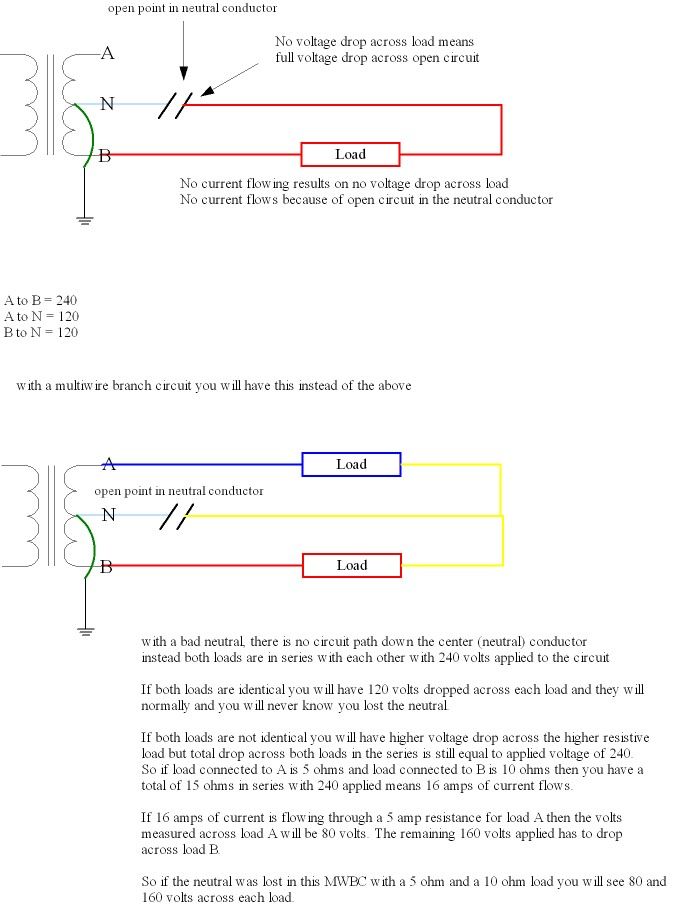donf
Member
- Location
- Tidewater Virginia
Educate me please.
While in my office, Directv went out. Using a NCV tester, yielded the presence of voltage on both hot and neutral. However, a meter yield 0 (zero) volts between Neutral and Hot.
When I pulled the recept., I found that there was 120v between Neutral and Ground and 120 V between Hot and ground.
Now, if this had been a multiwire branch circuit and Neutral failed I would expect to find 240 V.
Seeing that there was only 120V I'm sure the same phase was involved but I'd like an explanation so I can pass it along during a safety segment of class that I have planned.
Don
While in my office, Directv went out. Using a NCV tester, yielded the presence of voltage on both hot and neutral. However, a meter yield 0 (zero) volts between Neutral and Hot.
When I pulled the recept., I found that there was 120v between Neutral and Ground and 120 V between Hot and ground.
Now, if this had been a multiwire branch circuit and Neutral failed I would expect to find 240 V.
Seeing that there was only 120V I'm sure the same phase was involved but I'd like an explanation so I can pass it along during a safety segment of class that I have planned.
Don


